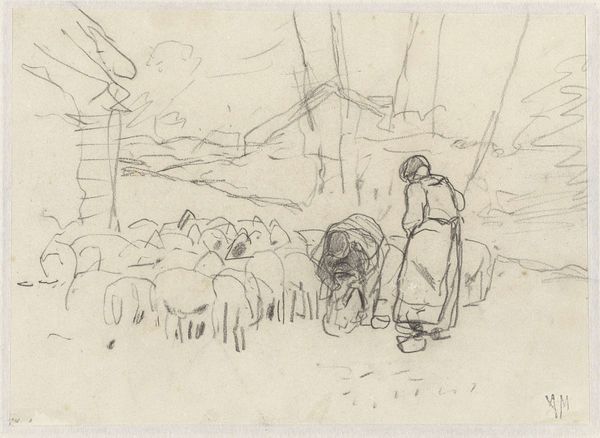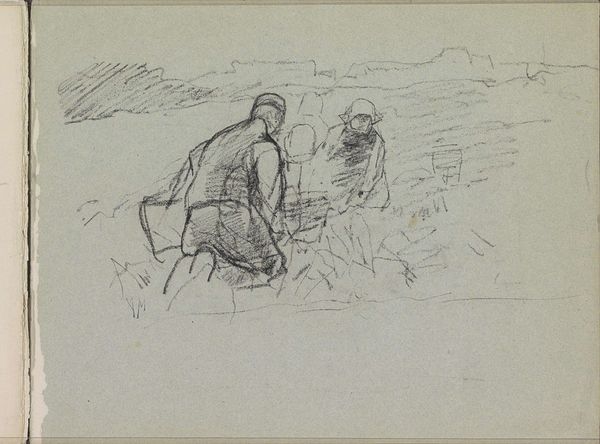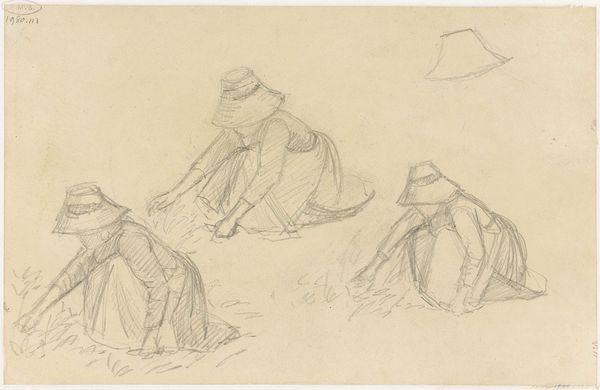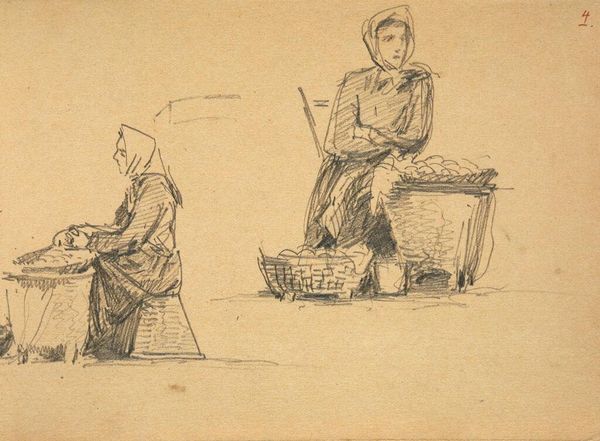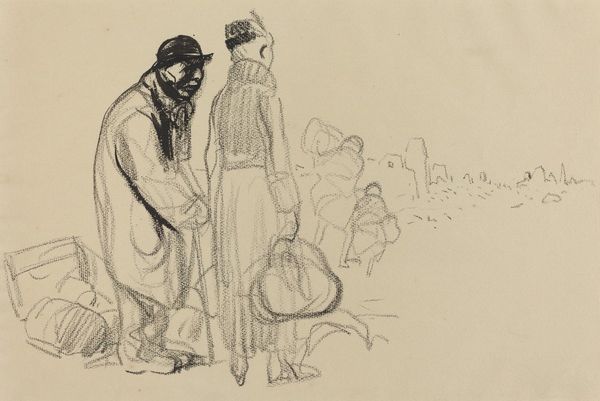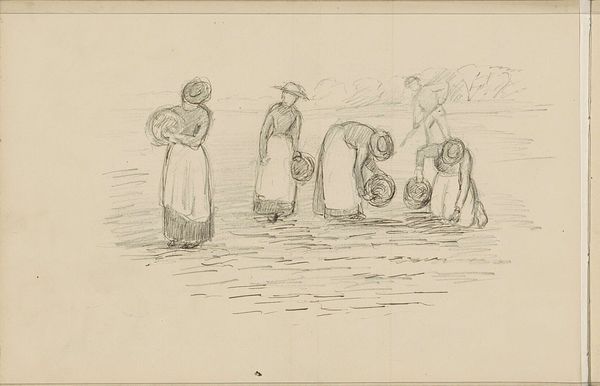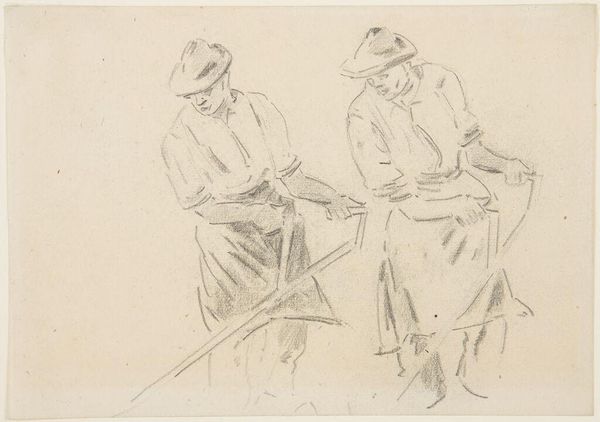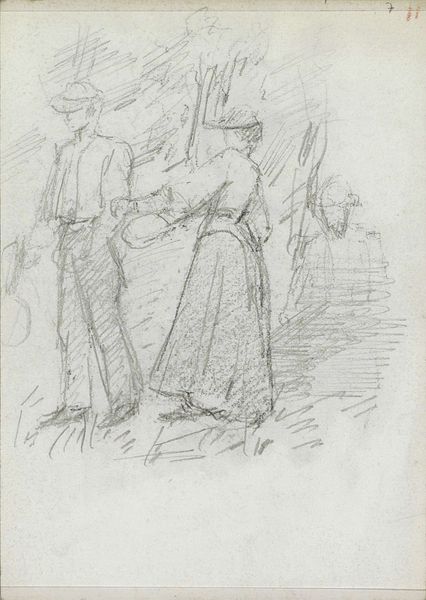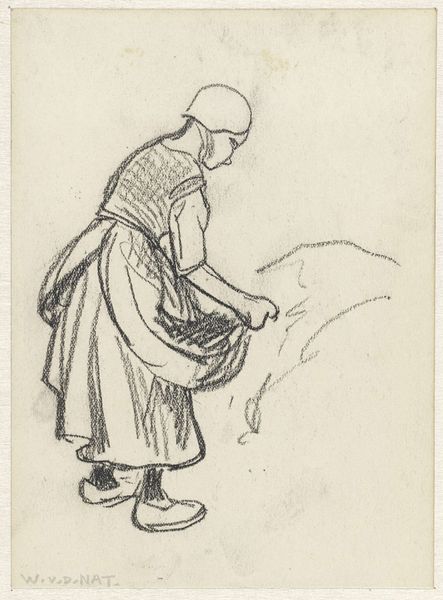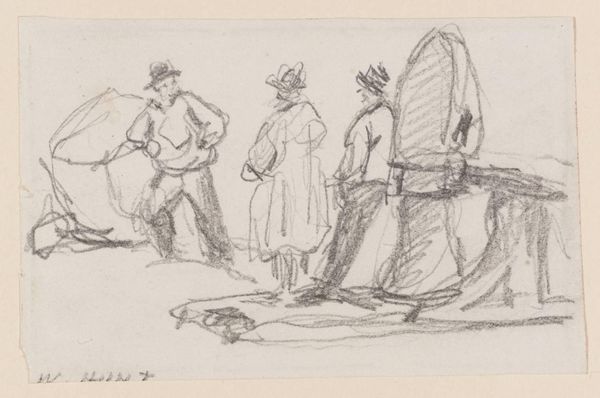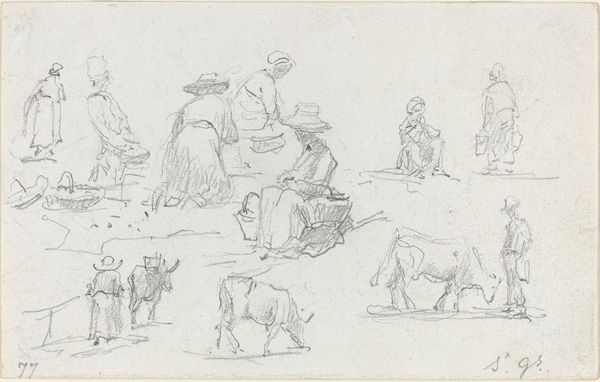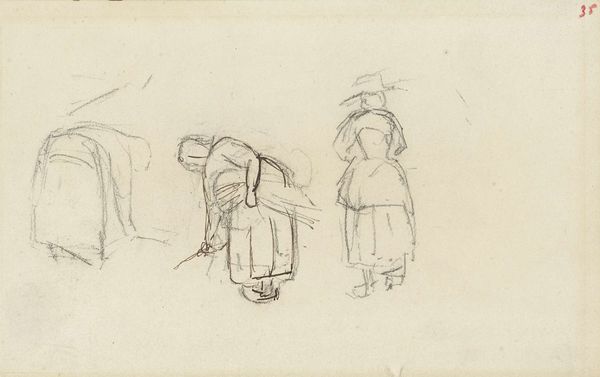
drawing, pencil
#
drawing
#
light pencil work
#
quirky sketch
#
impressionism
#
pen sketch
#
pencil sketch
#
landscape
#
personal sketchbook
#
ink drawing experimentation
#
pen-ink sketch
#
pencil
#
sketchbook drawing
#
genre-painting
#
sketchbook art
#
initial sketch
Dimensions: height 130 mm, width 208 mm
Copyright: Rijks Museum: Open Domain
Curator: Here we have Jozef Israëls' "Boer en boerin op het veld," dating roughly from 1834 to 1911. It's currently held at the Rijksmuseum, a drawing in pencil, seemingly a quick study of a farmer and his wife in a field. Editor: It feels incredibly raw, like a glimpse into the artist's sketchbook. The sketchy lines and the depiction of labor in the fields – it evokes a sense of rural life and toil. What strikes you most about this piece? Curator: The visible process of creation is what fascinates me most. Look at the varied pressure of the pencil – a clear record of the artist's hand at work, isn’t it? We also have to consider Israëls' choice to represent these figures in the midst of their labor, making visible the means of their survival and the social context of their work. It draws attention to the usually invisible hands of production. How does that strike you? Editor: That's an interesting perspective. I initially saw the roughness as purely stylistic, but viewing it as highlighting the 'means of survival' shifts my understanding. Does that raw style challenge the traditional, more polished academic art of the time? Curator: Precisely! Think about the prevailing artistic hierarchies then. Israëls, through the deliberate use of humble materials and the focus on labor, blurs the boundaries between high art and depictions of everyday toil. He elevates the working class as worthy of artistic representation. How might contemporary viewers have responded to such a depiction of working-class people? Editor: I imagine it could have been seen as radical. Highlighting labor and everyday life...it's definitely a break from idealized portraits of the wealthy. I learned something new about seeing beyond just the surface aesthetics. Curator: Indeed. By examining the materiality and social context, we can gain a deeper understanding of the artwork’s message and its challenge to the existing social and artistic order.
Comments
No comments
Be the first to comment and join the conversation on the ultimate creative platform.
